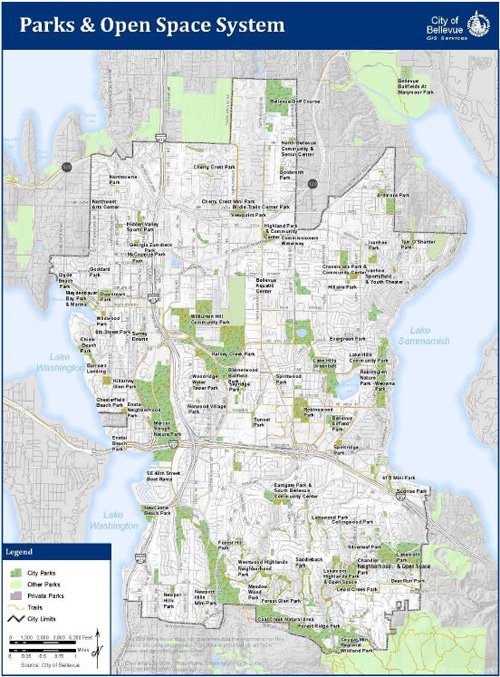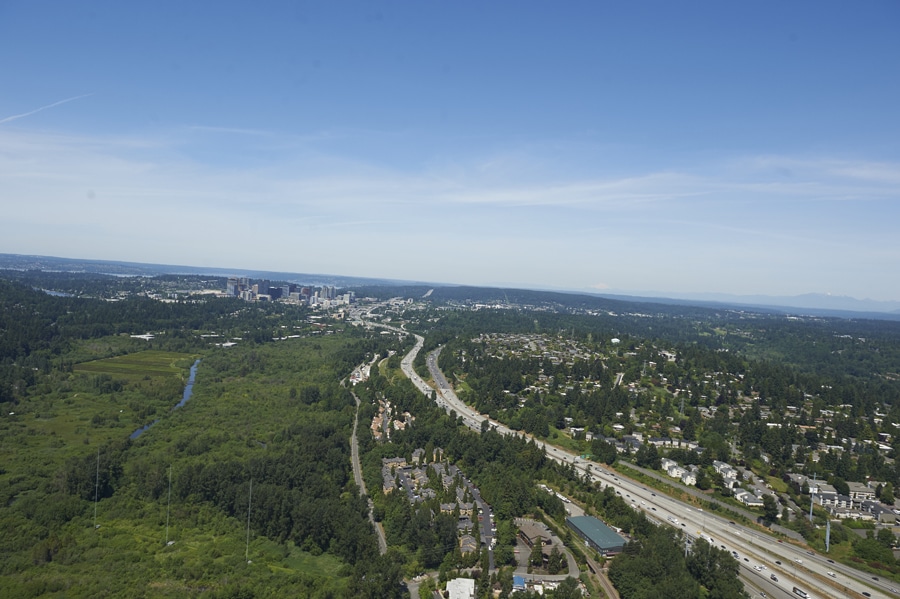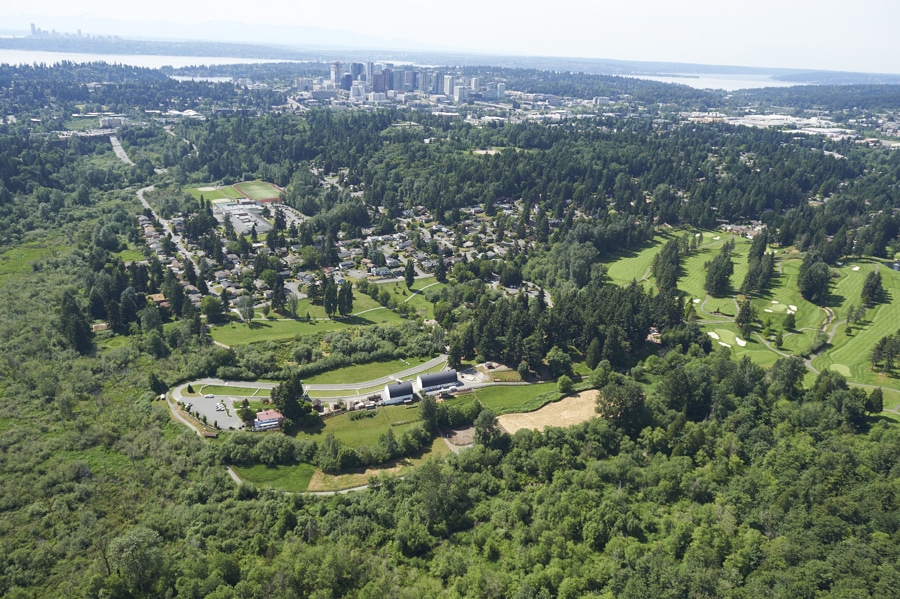Location: Bellevue, Washington
Highlighted Element: 422.c. Natural Functions Open Space (NFOS)
Point of Contact: Jerry Shuster, P.E., CFM, Senior Stormwater Engineer, Bellevue, WA
Bellevue, Washington is a growing city in the Pacific Northwest. Located just across Lake Washington from Seattle, this community was settled in the late 1860s when Seattle settlers traversed the lake and began to lay claim to the lands on its eastern shore (Eastside Heritage Center, 2011). Residents made their way farming fresh produce, which was sold to the citizens of Seattle (Eastside Heritage Center, 2011). The city's population grew steadily from just 400 in the early 1900s to nearly 6,000 in 1953, when the city was finally incorporated (Eastside Heritage Center, 2011).

Today Bellevue is home to more than 135,000 residents and is no longer thought to be a suburb of Seattle, but a global city in its own right (City of Bellevue, 2016; "History," no date). That said, despite this development, Bellevue is still sometimes known as "a city in the park." Within the city's nearly 32 square miles of land area, just under 100 parks have been created for resident's use and enjoyment ("Bellevue, Washington," no date; Bellevue Parks Department, no date). This is a product of the community's commitment to the preservation of open space, a value that is central to the ideals of many of the city's residents. Over time the four major streams flowing through the city have become the "backbone" of the parks, greenways, and natural areas within the city (City of Bellevue, 2016). These areas have been protected largely thanks to the proactive efforts of the city's parks department, which focused its efforts on acquiring areas adjacent to creeks and streams for park use.
Learn more about how your community can earn credit for conserving natural areas in the floodplain! Check out the profile for CRS Element 422.c. Natural Functions Open Space.
While the intent of the parks department may not have been to attenuate flooding, the net effect of their preservation has been to keep much of the floodplain open and many wetland areas intact. The parks department has not undertaken this effort without the support of city policies. For example, in 1974 Bellevue was one of the first cities in the nation to establish a stormwater utility. Since its inception the utility has been a source of dedicated funding for the city's efforts to protect its receiving waters. The city has passed fairly stringent floodplain development regulations that limit the types of development that can occur within the Special Flood Hazard Area, and they also prohibit development that produces any rise in floodway elevations. Taken together, the community's preservation of lands adjacent to streams and development regulations have resulted in very minimal amounts of flooding in the city's riparian areas, and the city itself has just a couple repetitive loss properties.

Thanks to the foresight of city leaders, especially in the parks department, the city was able to purchase these lands prior to development. This is arguably a simpler process than trying to orchestrate a full neighborhood buyout program, and has been key to the city's success in the CRS program. As a result of the community's CRS efforts, the city has attained a class 5 rating, which results in up to a 25% discount on property owners' flood insurance premiums. This results in an annual savings of $118,000 per year on flood insurance.
Best practices shared by this community:
- Communities just starting to grow or develop should focus on purchasing floodplain lands for public parks while the pressure to develop them is still relatively low.
- Talk to the public frequently and get their opinions. Let them know setting aside riparian areas is good for recreation, preventing and reducing flooding, and for the environment of the creek.
